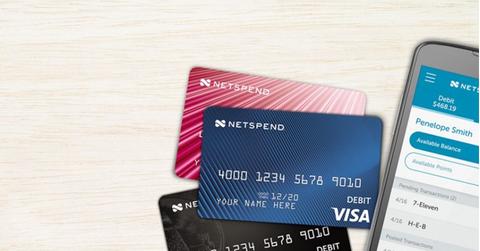If You Get a Netspend Card in the Mail From the IRS, Don't Throw It Away!
If you received a Netspend card in the mail from the IRS, there’s a reason why. Here’s what the card is for and how you can use it. The card isn't a scam.
Oct. 7 2022, Published 3:43 p.m. ET
Did you receive a prepaid Netspend debit card in the mail? Don't throw the card away! We've got all the details on the prepaid card that many might assume is a scam.
If you get a Netspend card in the mail, it could have something to do with your tax return. Keep reading to learn more.
Why does the IRS send Netspend prepaid debit cards in the mail?
If the IRS doesn't have your direct deposit information on file, you may receive money in the mail. This can come in the form of a check or a prepaid debit card. One type of prepaid debit card the IRS may send is Netspend.
The IRS may send a Netspend card that carries the value of your tax refund from your last filed tax return. This is also one of the methods the IRS used to pay out Economic Impact Payments to eligible Americans during the COVID-19 pandemic.
You can choose to receive a direct deposit from the IRS on a Netspend card.
According to the Netspend website, you can sign up to receive a Netspend card in lieu of a direct deposit tax return. The company instructs:
“If you haven’t already ordered a Netspend Prepaid Card, that’s your first step. Be sure to activate your Card and verify your identity when it arrives within 7–10 business days.
Select Direct Deposit on your tax form (or select the direct deposit option if filing online) to receive your refund on your Netspend Prepaid Card when filing your taxes.
Enter your Netspend Prepaid Card Routing number and Account number in the designated fields, and choose ‘Checking’ as the account type.”
Netspend says its prepaid cards come faster than an IRS check, which could be helpful for people looking for liquidity sooner rather than later. With the IRS extended tax deadline on Oct. 17, many Americans with late filings may be looking for those returns prior to the holiday shopping season, so a prepaid card or direct deposit could be helpful.
Giving the IRS your direct deposit information is straightforward.
If you’d rather forego a check or prepaid debit card altogether, you can always provide the IRS with your direct deposit bank account information.
The IRS writes, “Direct deposit is easy to use. Just select it as your refund method through your tax software and type in the account number and routing number. Or, tell your tax preparer you want direct deposit. You can even use direct deposit if you are one of the few people still filing by paper. Be sure to double check your entry to avoid errors.”
Fun fact: You can also split your refund using IRS Form 8888, allowing you to allocate the funding between a few bank accounts. For folks who use strict budgeting measures, this could be a helpful step.
Both direct deposit and prepaid debit cards are faster ways to get your tax refund than if you waited for a paper check.



